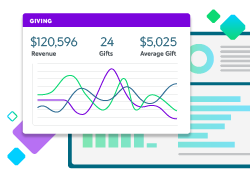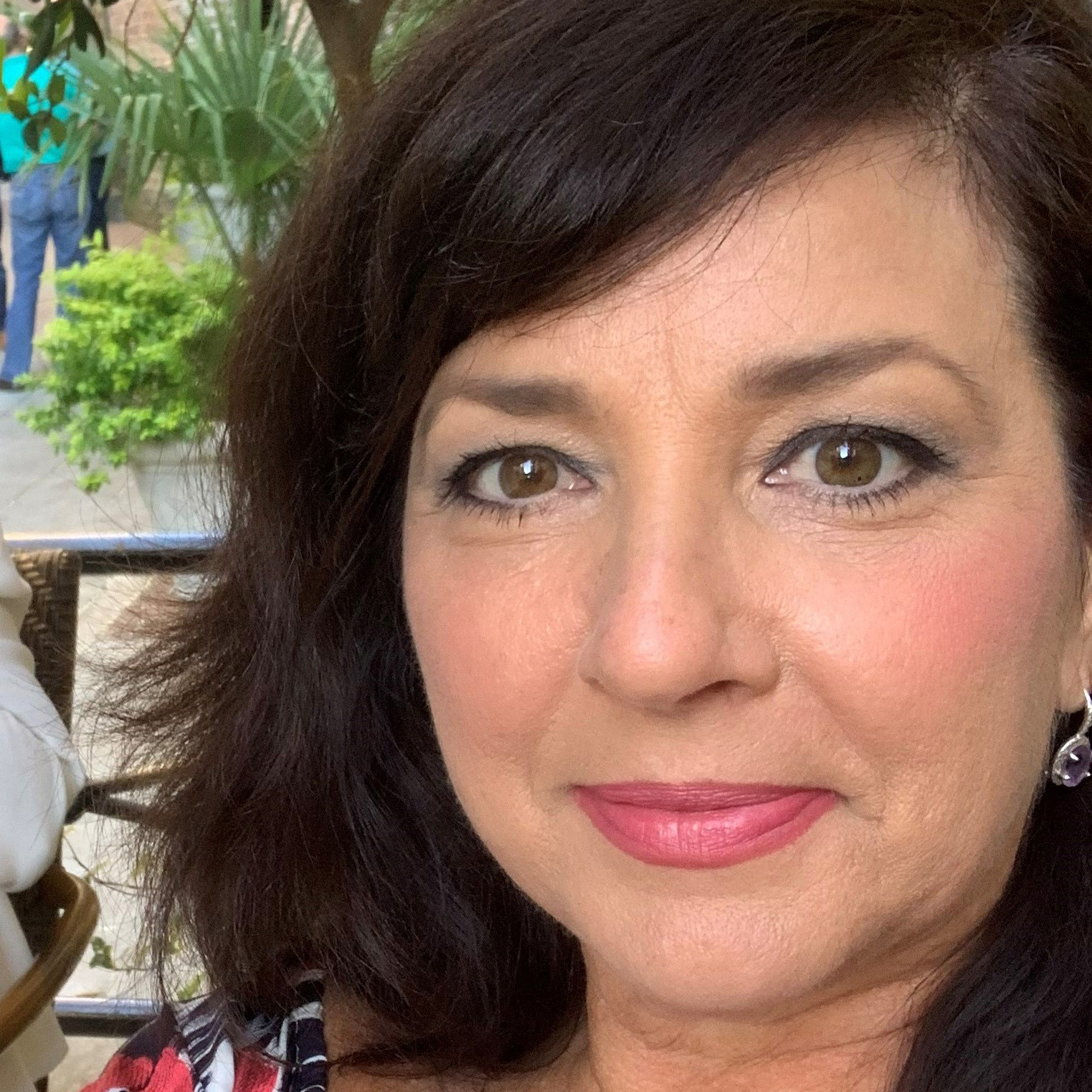How to Build Your Nonprofit’s Major Gifts Fundraising Program

If your growing nonprofit has never had an official major gifts program or your existing major giving strategy needs a refresh, now is the perfect time to launch or expand your program. Charitable giving has grown nearly 20% in the last three years, with the average gift amount increasing by 10% in 2021. If you’re ready to ride that momentum to connect with donors who have the means and the motivation to give big to your cause, it’s time to learn how to build your nonprofit’s major gifts fundraising program.
You’re Not Too Small to Raise Big Gifts
For even the smallest nonprofit, a major gift can be a game changer. Most social good organizations receive more than 80% of their fundraising dollars from fewer than 20% of their donors. Focusing your efforts on a handful of donors with high potential to support your specific mission can help you raise more substantial gifts in less time with fewer resources. More reasons smaller nonprofits should focus on bigger donations:
- Major gift fundraising is cost-effective (on average, you’ll spend less than a dime per dollar raised).
- A single major gift could boost your revenue by 10%—significantly more for smaller organizations.
Define “Major”
While there is no industry standard for what qualifies as a major gift—a global organization might target $1 million, whereas a startup nonprofit might shoot for $500—the 2020 Major Gift Benchmark Study reported the median level for a major gift at $5,000-$9,999. But more than a quarter of nonprofits define a major gift as starting at $1,000. That’s a number within reach for even a first-time major gift appeal and, in fact, is not far off from the 2021 average donation amount of $813.
Set Your Major Gift Threshold
What is the largest gift your nonprofit has ever received? You could use that amount as your major gift starting point. Here are some guiding questions that can help you define your major gift threshold and identify major donors:
- Is this gift 5–20 times greater than the donor’s previous annual donation?
- Has this donor made multiple gifts over the course of a year or two?
- Have you pulled a report from your constituent relationship management (CRM) system that lists all gifts over the last two years near or above your major donor threshold?
- What amount do your top 10–15% of donors give as annual gifts?
- Does your loyal donor believe their donation is a major gift? (Honor their generosity by ensuring your major giving range includes their gift amount.)
Fundraising software solutions can help to ensure that you’re not leaving money on the table by asking for too little from qualified major donor prospects. This insight will help you set a reasonable goal for your campaign.
Build Your Major Gifts Plan
Identify Your Nonprofit’s Major Gifts Prospects
Start with the supporters you already know. Your CRM database is your first and most effective source of potential major donors. From there, research will help you develop the best prospect profiles for your portfolio, but don’t look at wealth alone.
“It doesn’t necessarily tell you a lot about their capacity or inclination to give,” said Christine Pieper, development director for the California Native Plant Society. “We hit a fair number of dead-ends with that wealth-only approach.”
Affluence combined with two interconnected elements will help you identify and cultivate not just likely major giving prospects, but the best big-gift donors for your organization:
- Capacity: Donors must have the financial means to make a large gift.
- Affinity: Your best major gift prospects are those who have an interest in your cause or have shown their support to similar organizations in the recent past.
- Affiliation: Major donors who have a relationship with your organization—previous donors, board members, volunteers, event attendees—are much more amenable to a major gift solicitation than a prospect pitched by a nonprofit they don’t know.
Innovations in analytics tools have come a long way. Even small nonprofits can prioritize their most likely prospects based on wealth, demographics, philanthropic history, and behavior.
Next-generation predictive modeling—plugging your data into a formula to create a numerical value or score to predict a donor’s probability of giving—also can help you connect with donors new to major giving. In fact, 37% of major donors identified by AI-enabled software solutions are first-timers.
Pieper and her team have adopted an AI-driven software solution based on a diverse combination of wealth, giving, and behavioral data. It has helped them cultivate the best major giving prospects for their organization—and to maximize their ask.
The Nonprofit CRM Built for Fundraisers
Find out how Blackbaud’s Raiser’s Edge NXT® fits your organization.

Establish and Manage Your Goals
Identify the overall goal—say $100,000—by breaking it into chunks. You’ll focus on one lead or transformational gift of maybe $25,000, and additional donors who will make smaller (but still major) gifts at lower levels. AI-driven predictive modeling leverages donor data within your CRM to provide prescriptive target gift ranges. Based on prospects’ giving capacity and behavior, target gift ranges can drastically improve the rate and size of major gifts.
Four Questions to Ask Your Team
- Do you have the personnel to pursue major gifts?
- Do you need to upgrade your donor database or tech capabilities?
- Do you need to create marketing materials such as brochures?
- Is your board prepared to participate in personalized events?
Your goal setting should include defined outcomes. Be prepared to explain the tangible results of how donor money will be used: a specific program, operational costs, capital to expand.
Be intentional about earmarking the funds but do leave space to discuss donor passion projects. Affluent donors with a passion are invaluable to your major gifts pipeline.
Hone Your Storytelling Skills
Before you increase your level of communication with prospective major donors, make sure you have your nonprofit’s story down cold. Prep by presenting to your board, leadership, and fundraising team. This requires not only that you know the plan and the goal, but also how to communicate it persuasively. Fine-tuning your pitch for internal stakeholders will give you confidence in making your first proposal to a donor.
Cultivate the Relationship
It’s time to get personal. Major donors do require hands-on attention, so become an expert in their interests and the nuances of your mission. Expect to be in it for the long haul, as moving a donor to their first major gift can take a few years. Nurture the relationship by involving prospective major donors in the experiences they care about:
- Invite them to meet your executive director, board members, happy volunteers, and beneficiaries of your nonprofit’s work.
- Plan exclusive special events to show them the love.
- Take them on a tour of your operation.
- Present dashboards, videos, and slideshows that invite them to imagine the transformational work you could accomplish with the right level of financial support, a visualization to forecast the ROI of their gift.
Donors even at the highest level are not immune to incentives. Plan to issue invitations to VIP events, name a garden, or highlight platinum-level gifts at your gala, on social media, or on your website. Make sure to build these incentives into your major gift expense budget, so you aren’t blindsided by unexpected costs and can get an accurate picture of the return on investment of your efforts.
Make the (Right) Ask
This is your moment of truth, says nonprofit consultant Amy Eisenstein. Major gifts do not materialize without a fundraiser asking for the donation.
Take your advance work seriously, she says. “Prepare, practice, and role play.”
Again, part of your preparation is to make sure you’re maximizing your prospect’s giving potential for this year by targeting the right gift range. The ask should be in your prospect’s sweet spot, neither too much nor too little.
All the prep work in the world, though, won’t close a major gift if you never ask for it. It’s time to act.
Is the Close Your Happy Ending?
Successful fundraisers do not treat a major gift as a one-time donation. You can significantly increase your chances of another major or recurring gift from the same donor by handling the afterglow like a pro and taking donor stewardship as seriously as you do the legwork for landing a major gift.
- Express your gratitude and provide details about the results of each donor’s gift—how it’s already impacting your mission.
- Follow up regularly with photos, charts, and thank-you notes from those who have benefited from your organization’s social good assistance.
- Keep the donor up to date on any new programs or organizational priorities that may drive their next gift.
There is no such thing as showing too much gratitude to a major donor. And it’s never too early to plant the seed for their next significant donation.
Even the smallest shop can develop the framework for a donor pipeline. Not every prospect will be a yes, of course, but the data you collect about your qualified prospects—and the referrals you ask them to make—can help you approach them more successfully next time.
The right software solution can help your team drive positive portfolio churn, adding and deleting prospects based on metrics that matter to your organization. Enhancing your software package with this kind of portfolio management can help you operate more efficiently and improve your major gift success rate.
